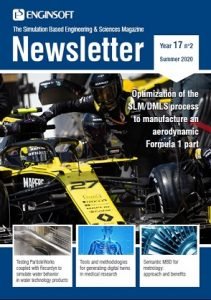 It’s now aviable the article published by RBF Morph on the EnginSoft Newsletter Year 17 n°2 Summer 2020 that provides a non-exhaustive overview of some of the latest advancesin the adoption of CAE technologies in the medical field by citing some ongoing EU research programs.
It’s now aviable the article published by RBF Morph on the EnginSoft Newsletter Year 17 n°2 Summer 2020 that provides a non-exhaustive overview of some of the latest advancesin the adoption of CAE technologies in the medical field by citing some ongoing EU research programs.
The pervasive use of engineering simulation during the design phase and for virtual testing, thus eliminating the need for multiple prototypes prior to product launch, is well established today.
The continuously growing availability of computing power and simultaneous algorithmic improvements now make high-fidelity numerical resolution of complex problems possible, integrating methodologies that are becoming established procedures in many fieldsof engineering. Clinical research has benefitted from these advances.
Furthermore, the advent of technologies such as big data management, augmented reality, automated computer-aided engineering (CAE) processing in high performance computing (HPC) environments, and additive manufacturing are changing the way healthcare is delivered with implications for the skills required by the next generation of healthcare professionals and academic researchers.
The use of numerical simulation to address clinical problemshas been consolidated in Europe through several research activities that also involved non-medical institutions specialized in engineering technologies.
Enjoy the reading!
